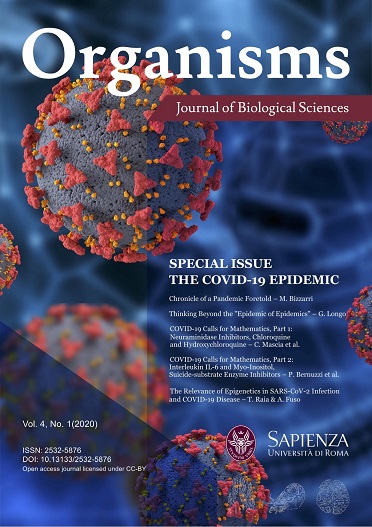COVID-19 Calls for Mathematics, Part 1: Neuraminidase Inhibitors, Chloroquine and Hydroxychloroquine
DOI:
https://doi.org/10.13133/2532-5876/16968Abstract
Looking at the outbreak of SARS-CoV-2 and the global state of emergency imposed due to its pandemic spread, the necessity for antiviral drugs to be immediately available is a priority for the scientific community. Considering that research and implementa- tion of new antiviral therapies or vaccines usually take a long time, the World Health Organization (WHO) has proposed to use in commerce drugs: in fact, repurposing drugs which are already accessible in large quantities is easier to fight against the virus, at least during the first emergency phase. In this article, we discuss various mathematical models which simulate the action of anti- viral drug therapies, such as neuraminidase inhibitors (NIs), for the treatment of H1N1 Influenza A virus, by using data collected through in vitro and in vivo experiments. This constitutes a paradigmatic case of study for paving the way to a systematic investi- gation of the effects of chloroquine and hydroxychloroquine as therapeutics in the treatment of SARS-CoV-2.
Citation: Mascia, C, Paparozzi, V, Ragni, A, Scanu, E, Simeoni, C, Tomellini, E, 2020, “COVID-19 Calls for Mathematics, Part 1: Neuraminidase Inhibitors, Chloroquine and Hydroxychloroquine”, Organisms: Journal of Biological Sciences, vol. 4, no. 1, pp. 115-127. DOI: 10.13133/2532-5876/16968.
Downloads
Published
How to Cite
Issue
Section
License
Copyright Agreement with Authors
Before publication, after the acceptance of the manuscript, authors have to sign a Publication Agreement with Organisms. The authors retain all rights to the original work without any restrictions.
License for Published Contents

You are free to copy, distribute and transmit the work, and to adapt the work. You must attribute the work in the manner specified by the author or licensor (but not in any way that suggests that they endorse you or your use of the work).





